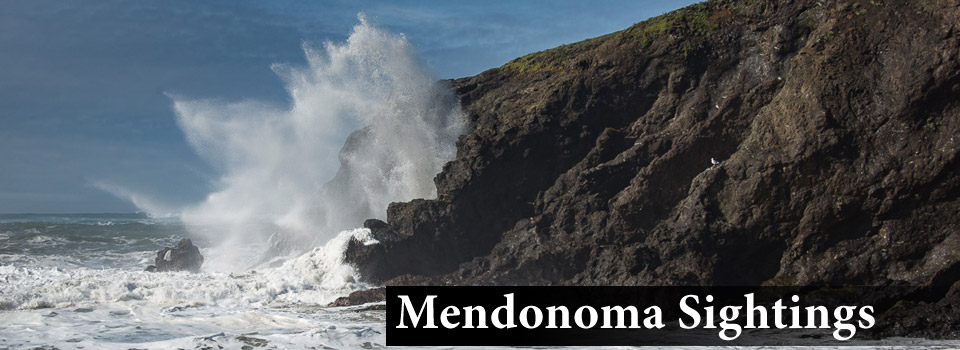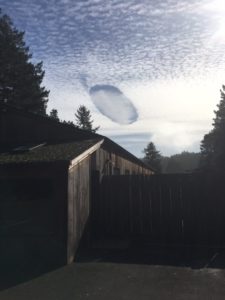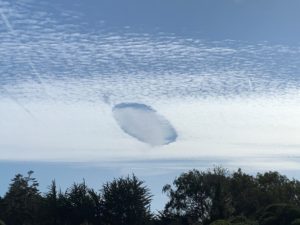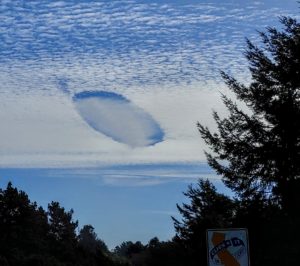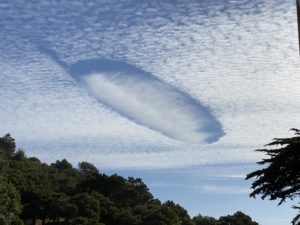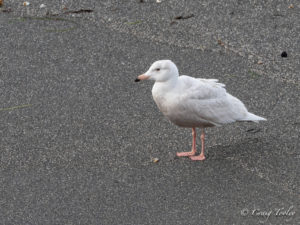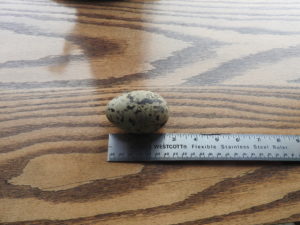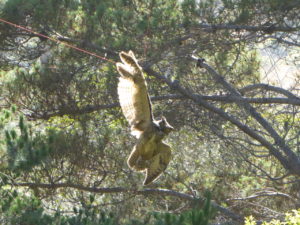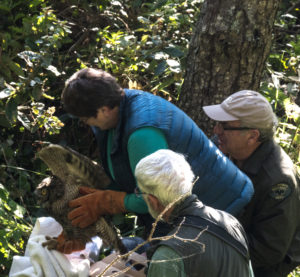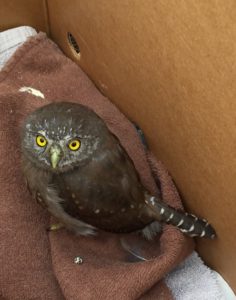This unusual cloud formation was seen in the late morning on Feb. 1st over Gualala and The Sea Ranch. It had been cold that day. Perhaps that’s why a rare phenomenon appeared in the sky. It was seen and photographed by quite a few coast residents. Janet Pierucci was the first to send in photos of a Fallstreak Hole. She wrote, “My husband, James Adrian Adams, and I both took pictures of the Fallstreak Hole which appeared around noon. So exciting to see.”
John Mills photographed the unusual cloud too.
Diane Hichwa also photographed it. She wrote, “I was driving on Highway 1, looked up and went. ‘WOW, how odd??? I watched it for a half mile and decided I should pull over and get a photo. It persisted for quite a while.”
Janet kindly sent a link regarding this cloud formation, which is also called a cavum, hole punch cloud, punch hold cloud, skypunch and more. It’s a large gap, usually circular or elliptical, that can appear in cirrocumulus or altocumulus clouds. A Fallstreak Hole is formed when the water temperature in the clouds is below freezing, but the water has not yet frozen. It’s amazing to learn about this cloud.
Thanks to Jane, James, John and Diane for allowing me to share their photos with you here.
Our unseasonable warm weather came to a screeching halt today, as a cold fog greeted us at daybreak.
